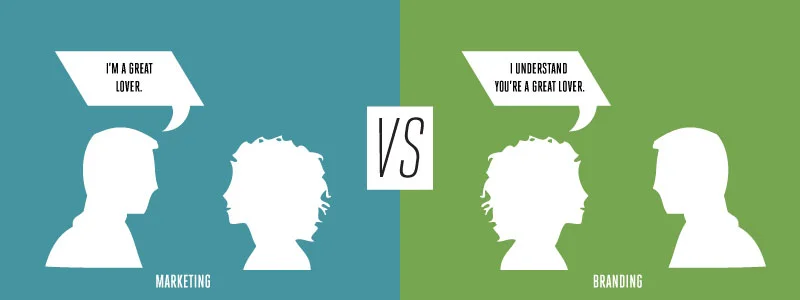Behind the Scenes: How Brand Development Agencies Transform Your Business
In today’s competitive market, a strong brand is more than just a logo or a catchy tagline; it’s the very soul of your business. It shapes how your customers perceive you, influences their buying decisions, and determines your success.
In this blog, we’ll take you behind the scenes to uncover how brand development agencies can shape the core of your business. We’ll explore the process, share effective strategies, and discuss how psychology influences branding. Ready to see how a personalised brand strategy can transform your business? Let’s take a look.
What is Brand Development?
Brand development is the strategic process of creating and enhancing a brand’s identity to resonate with its target audience. This involves defining the brand’s mission, vision, values, and personality and developing a consistent visual and verbal identity. The goal is to create a strong, positive perception of the brand in the minds of consumers.
Why is Brand Development Crucial for Business Success?
Differentiation
A well-developed brand helps you stand out from competitors in a crowded market. It highlights what makes your business unique and why customers should choose you over others.
Trust and Loyalty
A strong brand fosters customer trust and loyalty. When people recognise and trust your brand, they’re more likely to become repeat customers and advocates.
Consistency
Brand development ensures consistency across all marketing channels and touchpoints. Consistent messaging and visuals reinforce brand recognition and reliability.
Emotional Connection
Effective branding creates an emotional connection with your audience. When customers feel connected to your brand, they’re more likely to develop long-term relationships and support your business.
Value Perception
A well-crafted brand can elevate the perceived value of your products or services. It allows you to justify premium pricing and attract a more discerning clientele.
In essence, brand development is the foundation upon which successful businesses are built. It’s not just about looking good; it’s about making a lasting impact on your audience and driving long-term growth.
Brand Development Process: The 5 Steps
Creating a compelling brand involves a series of carefully planned brand development steps. Here’s an overview of the five steps involved in the brand development process:
- Discovery and Research
- Strategy Formulation
- Creative Development
- Implementation
- Evaluation and Refinement
Let’s take a look at these in some more detail…
- Discovery and Research
This initial phase involves gathering information about your business, industry, competitors, and target audience. Market research, stakeholder interviews, and competitive analysis help understand your brand’s current position and identify growth opportunities. This comprehensive understanding forms the foundation of the brand development process.
- Strategy Formulation
Based on the insights gathered during the discovery phase, a tailored brand strategy is developed. This includes defining your brand’s mission, vision, values, and unique selling propositions. Your brand positioning and messaging framework are also outlined, ensuring effective communication with your target audience.
- Creative Development
With a clear strategy in place, the creative phase involves developing your brand’s visual and verbal identity, including logo design, colour palette, typography, and tone of voice. The goal is to create a cohesive and compelling brand identity that reflects your brand’s essence and appeals to your audience.
- Implementation
Once the creative assets are finalised, the brand is implemented across all touchpoints. This includes updating your website, marketing materials, social media profiles, and any other customer-facing platforms. Consistency and alignment with your brand strategy are ensured in every detail.
- Evaluation and Refinement
Brand development is an ongoing process. After implementation, continuous monitoring of your brand’s performance and gathering feedback allow necessary adjustments and refinements to keep your brand relevant and effective in achieving your business goals.
Brand Development Strategies
Developing a strong brand involves strategic planning and execution. These strategies ensure your brand is distinctive and connects with your target audience. So let’s look into these strategies in more detail.
Brand Positioning
This involves defining how your brand is perceived in the minds of consumers relative to competitors. Identifying your brand’s unique value propositions and crafting positioning statements that highlight these differentiators ensure your brand occupies a distinct and desirable place in the market.
Brand Messaging
This includes the key messages and tone of voice used to communicate with your audience. A messaging framework that aligns with your brand’s values and resonates with your target audience is developed, ensuring consistent and impactful communication across all channels.
Visual Identity
Your brand’s visual identity encompasses the logo, colour palette, typography, and imagery used to represent your brand. Creating a cohesive visual identity that reflects your brand’s personality and appeals to your audience makes your brand instantly recognisable and memorable.
Brand Experience
This involves creating positive and memorable interactions with your brand at every touchpoint. Designing customer journeys that deliver exceptional experiences fosters emotional connections and loyalty to your brand.
The Role of Marketing Psychology in Brand Development
Marketing psychology plays a crucial role in shaping consumer perceptions and behaviours. Leveraging psychological principles creates brands that resonate on a deeper level.
So how does marketing psychology influence branding?
Understanding how consumers think, feel, and behave and using this knowledge to influence their perceptions and actions creates branding that appeals to the rational mind and engages people’s emotions.
Examples of Psychological Principles Used in Branding
Colour Psychology
Colours evoke specific emotions and associations. For example, blue often conveys trust and professionalism, while red can evoke excitement and urgency. Using colour psychology to select a palette that aligns with your brand’s personality and desired emotional impact.
Emotional Appeal
Emotions drive decision-making. Crafting brand messaging and visuals that evoke positive emotions creates a strong emotional connection with your audience.
Social Proof
People tend to follow the actions of others. Incorporating testimonials, reviews, and case studies builds credibility and trust in your brand.
Customising Strategies for Clients: Bellman Agency’s Unique Approach
Every business is unique, and our strategies are tailored to meet the specific needs and goals of each client. This personalised approach ensures that strategies effectively address your challenges and leverage your strengths, resulting in a powerful and distinctive brand.
We stand out in the industry with our commitment to thoughtful branding and design. By blending strategic thinking with expert craftsmanship, we create visually stunning and strategically sound brands. Each and every project is crafted with love and attention to detail.
Thoughtful design leaves a lasting impression. Our dedication to quality and creativity ensures that your brand not only looks beautiful but also delivers meaningful results.
Check out our Recent Projects! Discover how a tailored brand strategy can revolutionise your business. Contact us for a personalised consultation.




